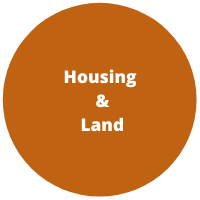EXECUTIVE SUMMARY
Access to drinking water and sanitation has been key issues affecting urban and rural communities in the developing world and cannot be separated from other poverty related issues.
In an editorial in Development Alternatives, Ashok Khosia summarizes the feelings of many development-oriented organizations by saying that "poverty cannot be removed without sustainable development and sustainable development cannot be achieved where there is poverty".
Various attempts have been made by international and local organizations to alleviate poverty related problems like food, shelter, water and sanitation in Urban and rural areas. These attempts range from research to placement of facilitatory structures within such marginalized communities.
This case study was done in the Undugu Society of Kenya, Kitui-Pumwani Integrated Programme. This is an informal settlement that has been upgraded using the multiple point intervention strategy whereby various programmes are implemented to address the problem of poverty.
To do full justice to poverty eradication measures specifically related to water and sanitation is always difficult bearing in mind that there are no clear cut boundaries. Experience from various parts of the world has shown that sustainable improvements among the urban low income are as a result of a complete interaction of environmental economy, demography, socio-cultural and political factors.
Thus Undugu’s search for solutions has involved various experiments and use of existing resources as efficiently as possible so as to buy the time needed for the poor communities to switch from a marginalized to a more self-reliant community through provision of ideas, support and advice, which stimulate and foster their participation in development.
One of Undugu’s recent contributions with support from donors is the provision of access to drinking water and sanitation facilities to the communities in Kitui-Pumwani settlement. While complete success is still a mirage, there has however been a positive impact in change of attitude among the authorities, donors and local community plus the physical placement of infrastructure within the villages of Kanuku Kinyago and Kitui plus the sustained integrated empowerment process that is the goal of every marginalized community.
SUMMARY AND CONCLUSIONS
The promotion of drinking water and sanitation technologies was given key emphasis during the International Drinking Water Supply and Sanitation Decade (1981-90). The major issues discussed were mainly related to access in terms of land tenure, availability of technology, demographic-economic and socio-cultural aspects.
A large proportion of the urban population in Kenya have no access to water and sanitation services and this is more pronounced in urban informal settlements. The 1992 report by UNICEF indicates that over 56 per cent of slum populations in Nairobi have no access to appropriate means of excreta disposal.
Various literature browsed through indicate that there are few or no services in the informal settlements of Nairobi and where available, they have been facilitated by the community or non-governmental organizations. While the City of Nairobi is supposed to provide the services, problems of rising demand and declaring level of services are two key problems that are paramount and require supportive infrastructure like relaxation of policies and promotion of affordable technologies.
This study had an overall objective of understanding and documenting the sustainable drinking water and sanitation technologies in the Kitui Pumwani Programme. The information that is available shows that the community had no access to water and sanitation prior to Undugu’s intervention and used to live in plastic Igloo dwelling units.
During the International Year of Shelter for the Homeless (1987) the project was considered for funding. Consequently upgrading was initiated through the community. The area had no water but there are now about 32 water points in the three villages. The process involved use of pressure groups and involvement of Undugu, local administration and finally the City Council agreed to extend water to the villages. The impact of water has been in the areas of health, employment and income generation. Information showed that the water groups employ members and the distance to source of water was reduced from 1.5km to an average of 27 meters. From an initial 5 water groups in 1984 the groups have doubled and new type of water kiosk entrepreneurship has sprung up where there are now 22 individually owned water kiosks with the village.
The groups have now ventured into other business and new technologies like water jars have been experimented with. Access to sanitation facilities which were non-existent been promoted through the provision of 12 pit latrines in 1986. Currently there are now 44 pour flush toilets 96 VIP latrines and 2 pour flush cum VIP latrines.
The distance to the toilets has been reduced from 1.5km in early 1980s to an average of 40 meters in the three villages.
Despite these improvements 34.3 per cent of the community have no access to toilets and children are the worst hit due to lack of keys or absence of an adult when the child needs to go to the toilets. However, attitudes towards toilets have changed and over 74 per cent would prefer a flush toilet and about 2 per cent would prefer a VIP pit latrine. On the issue of sustaining the process, Undugu Society initiated training of Community Health workers from the villages who are now involved in sensitizing and mobilizing the community on sanitation and leadership related issues.
The impact of providing access to the technologies and capacity building at community level have been felt at household level and community levels through change of attitudes, employment creation (self-reliance) better leadership and access to clean water which has attracted business like laundry, shoe, repair, food kiosks and others. Observations showed that the businesses are even conducted closer to the toilets than is normal.


